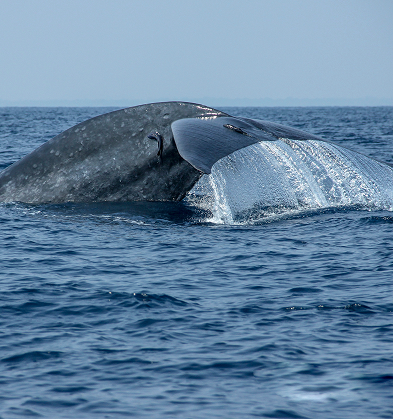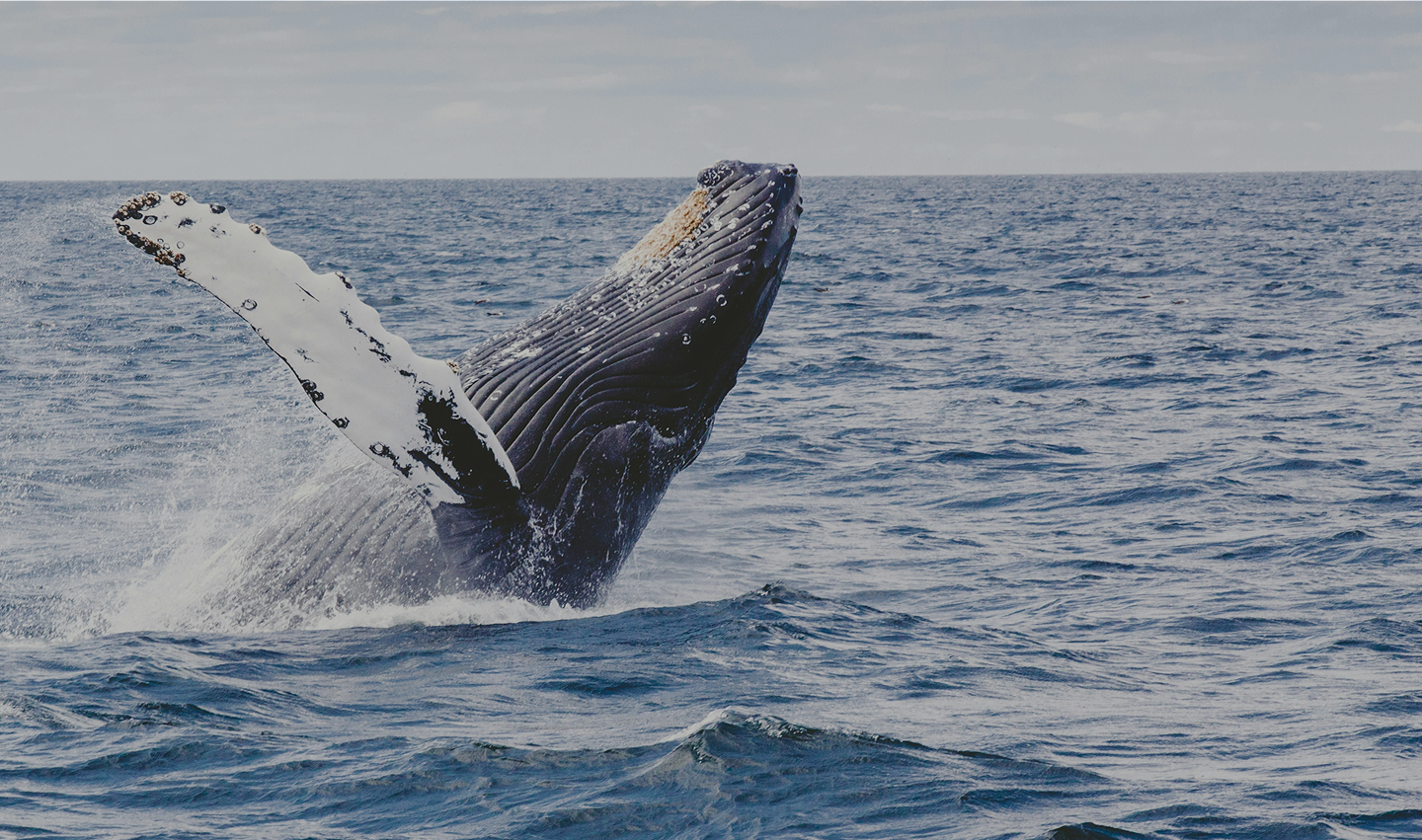
Marine Life of
Sri Lanka
Beneath the waves of this tropical island lies a world of vibrant coral reefs, graceful sea turtles, playful dolphins, and elusive marine giants. From coastal shallows to deep ocean trenches, Sri Lanka’s waters are a sanctuary of biodiversity — a haven for divers, explorers, and ocean lovers alike.
Fins, Flows & Ocean Whispers
Sri Lanka’s vibrant marine life makes it a top destination for ocean lovers and underwater explorers. Surrounded by the warm waters of the Indian Ocean, the island is home to an incredible variety of marine species, including blue whales, dolphins, sea turtles, manta rays, and colorful coral reef fish. From whale watching in Mirissa to snorkeling and diving in Trincomalee or Hikkaduwa, Sri Lanka offers unforgettable experiences for marine wildlife enthusiasts, making it one of the best places in Asia to discover the wonders of the underwater world.
Risso's Dolphin
Grampus griseus
The Risso’s Dolphin stands out as the largest “true” dolphin without a distinct beak, featuring a robust body and blunt head with a unique concave groove running from blowhole to mouth. Their appearance transforms dramatically throughout their lives—beginning as uniformly light grey calves, darkening to dun-colored juveniles, then gradually lightening to nearly white adults due to extensive scarring, particularly prominent in males. Only their flippers and flukes retain their original darker coloration.
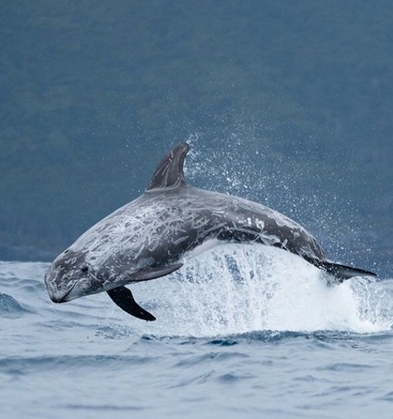
Bottlenose Dolphin
Tursiops truncatus
The Common Bottlenose Dolphin is an impressive marine mammal known for its robust, bulky physique—notably larger than its Indian Ocean cousin. Distinguished by a stubby beak separated from its prominent melon by a distinct crease, this powerful cetacean displays complex coloration ranging from slate grey to bluish or dun on its upper body, gradually lightening along its sides to pale greyish-pink or white on its underside. These magnificent animals can reach lengths of 3.9 meters and weights of 650 kg.
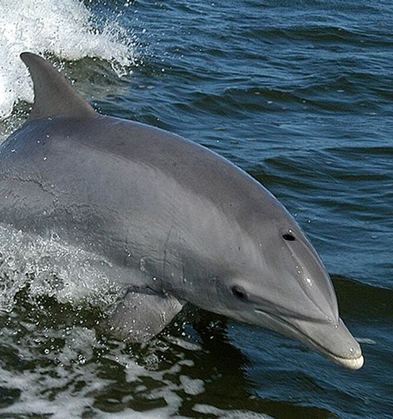
Spinner Dolphin
Stenella longirostris
The Spinner Dolphin reigns as the most acrobatic and abundant cetacean in Sri Lankan waters, delighting observers with its spectacular aerial displays. These small, slender marine mammals are characterized by their long, slim beaks and distinctive three-tone coloration: dark grey on top, medium-grey flanks, and creamy white or pink bellies, often with a dark stripe running from eye to flipper.
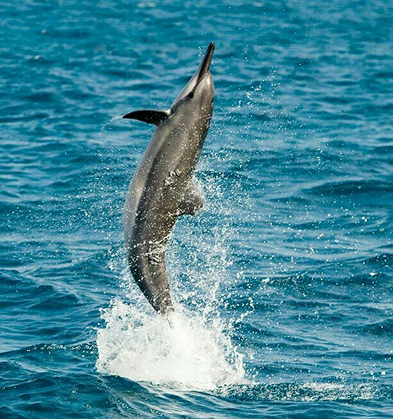
Sperm Whale
Physeter macrocephalus
The magnificent Sperm Whale reigns as the largest of all toothed whales, deriving its name from the enormous spermaceti organ that occupies most of its distinctive squared-off head—a feature that accounts for nearly one-third of the male’s impressive 20-meter length and 55-ton weight. These marine giants display a relatively robust body with a characteristically wrinkled surface behind their blunt, massive heads, and sport a fairly uniform dark grey or brown coloration occasionally marked with subtle streaks and spots.
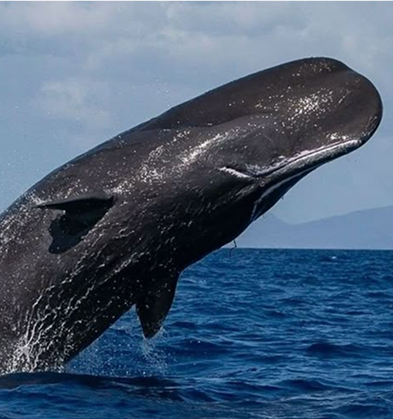
Bryde's Whale
Balaenoptera edeni
Named after Norwegian whaler Johan Bryde (pronounced “broodess”), these magnificent marine mammals feature a distinctive V-shaped head with three parallel longitudinal ridges extending from rostrum to blowholes—a unique characteristic that helps distinguish them from other baleen whales. Their streamlined bodies, reaching up to 17 meters in length and weighing as much as 40 tons, display a dark, smoky blue-grey coloration on top with cream or lighter blue-grey undersides and distinctive yellowish-white throat pleats numbering between 40-70.
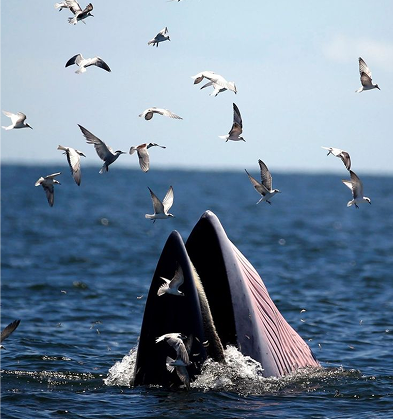
Blue Whale
Balaenoptera musculus
The Blue Whale stands as the largest creature ever to inhabit Earth, with its streamlined body reaching astonishing dimensions of up to 100 feet (30 meters) in length and weighing over 200 tons—a truly colossal marine giant whose tongue alone rivals an elephant in weight and whose heart compares to an automobile. Distinguished by a broad, U-shaped head comprising nearly a quarter of its total length, these magnificent mammals display a characteristic blue-grey coloration with lighter mottling, while their undersides feature paler or white tones that may occasionally take on yellowish-green hues from microorganism growth. As powerful swimmers, Blue Whales cruise comfortably at 20 km/h but can accelerate to an impressive 45 km/h when disturbed.
